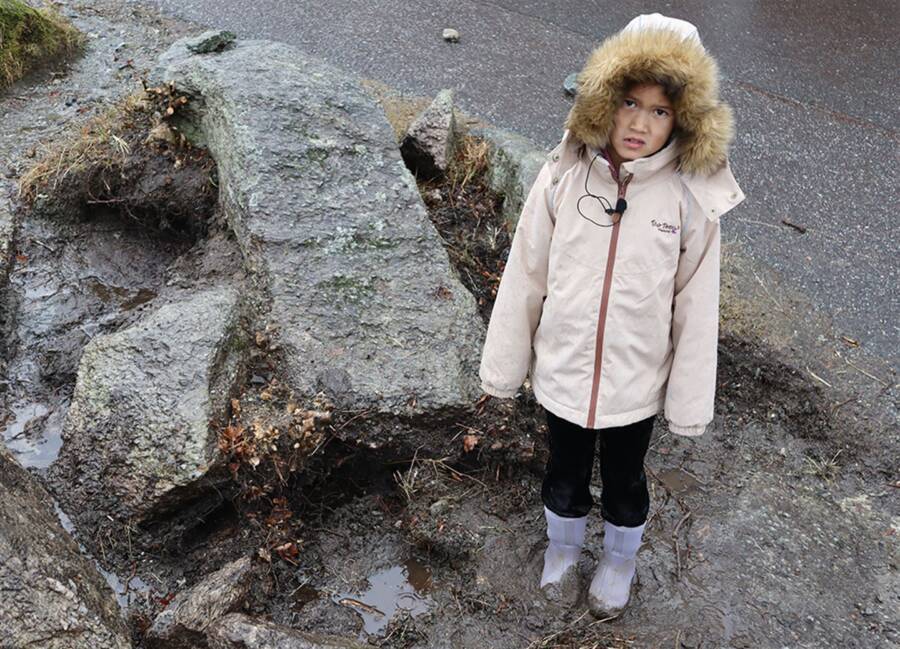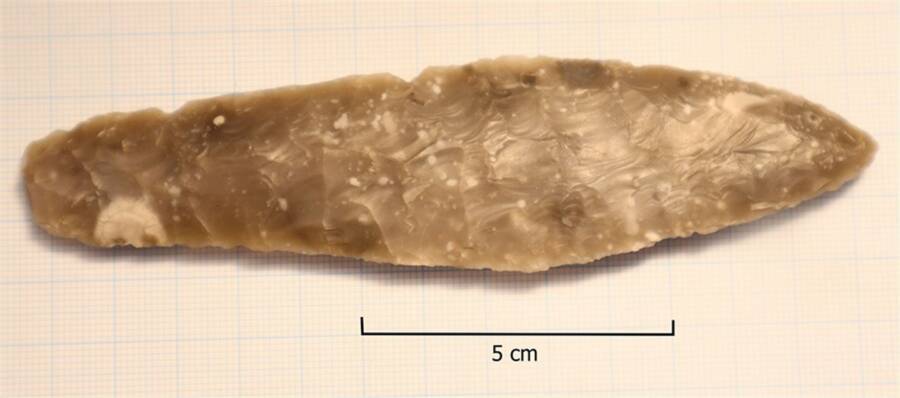
Vestland County MunicipalityThe eight-year-old girl was identified only as Elise.
In May 2023, an eight-year-old girl named Elise went to school in Os, Norway, like it was any other day. This day was anything but ordinary, though.
While playing outside, something caught Elise’s eye. At first, she thought it was glass.
“I was going to pick up a piece of glass, and then the stone was there. It was nice,” she recalled. “Nice” was an understatement. This “stone” was actually a nearly five-inch-long object, grayish-brown in color, and with jagged, sharpened edges. It was far from an ordinary stone.
The young girl showed the object to her teacher, Karen Drange, who quickly realized the thing was incredibly old and appeared to be made of flint, which isn’t typically found naturally in Norway. Following proper protocol for potential prehistoric discoveries, Drange contacted the Vestland County Council.
The council brought in archaeologist Louise Bjerre Petersen to examine the mysterious object. Her assessment confirmed everyone’s suspicions: “The stone is a beautiful flint dagger from the Neolithic period. It is an incredibly fine dagger, which is very rare to find.”
The discovery prompted collaboration between the Vestland County Council and the University Museum in Bergen to conduct a thorough archaeological survey of the area around the Os school. Despite extensive searching, researchers found nothing similar.
“We found neither more objects nor traces of the Stone Age right here,” Petersen explained, “but the dagger Elise found is quite unique. It will contribute to further research into the Stone Age in Western Norway.”

Vestland County MunicipalityThe Stone Age dagger Elise found near her school.
Stone Age flint daggers served an unexpected purpose in Neolithic communities. Unlike practical tools, such as axes and knives that were used for daily activities like chopping wood and hunting, these daggers appeared to be “prestige objects” designed to indicate the social status of their owners.
These prestige weapons emerged toward the end of the Neolithic era, coinciding with the beginning of the Bronze Age. Experts believed they may have been imitations of slightly more advanced bronze daggers that served as status symbols among early European communities. The period became known as the “Dagger Period” as Danish flintworkers continued perfecting their craft even as bronze became more widely available.
The fact that the dagger was made from flint not found in Norway suggested it had traveled significant distances, likely brought from ancient Denmark across the North Sea through prehistoric trade networks.
Following its authentication and initial study, the dagger was housed at the University Museum in Bergen.





